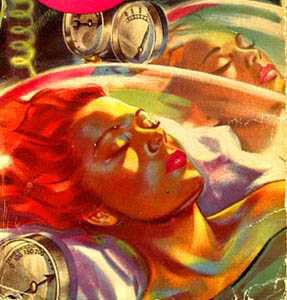420


From sleeping beauty to dragons; grizzly bears and squirrels to viruses and bacteria, hibernation seems like nature’s best way to keep tough times at bay. Come to think of it, the idea of putting the protagonist in sci-fi movies, in a state of suspended animation in order to transport him to far off planets or reemerge when the time is right is not something unimaginable. This hyper sleep that the characters are put through is something that happens quite a lot in nature!
If you are getting a little confused with the whole concept, let me put it simply- hibernation (or hyper sleep) is when an organism’s metabolic activity is reduced to the minimum (almost zero), where by it enters a state of suspended animation. In mammals there is a drop in temperature (almost 2-4 degree C), oxygen consumption drops down to 2% and there is a serious fall in the heart rate as well. And how does it help, you may ask, well imagine you are waiting your turn to get a table in a fancy restaurant on a Saturday night, the wait is killing you, your kids are getting on your nerves, you’re hungry as hell and have no energy (and will) to handle all of this, all you do is sleep through it, till you think conditions are conducive enough to surface again. (now, how cool is that)!
Like I said before, this phenomenon is not very elusive to us humans, and one such case was seen in Japan, a few years ago. While returning home from a party, Mitsutaka Uchikoshi, stumbled, hit his head and lay unconscious for 24 days. He was found in an ice covered corn field, near a hiking spot and was presumed dead. When found, there was no trace of a pulse or respiration, his body temperature was 71 degrees Fahrenheit- 27 notches below normal, and was declared dead. But on the way back to the Kobe City General Hospital, he woke up. Similar cases have been encountered elsewhere, while body temperatures dropped down to 61 F (in case of a toddler) and even 57 F (woman found in a frozen lake), with no sign of a heartbeat or respiration, and they sprang back to life, without any signs of physiological damage. It is as though hypothermia induced a state of limbo in these individuals.
Scientists at the University of Pittsburgh have managed to replicate this phenomenon in dogs. At the Safar Centre for Resurrection Studies, dogs were placed in a state of suspended animation and revived back to life without any damage done to the brain. Now the procedure may sound very sci-fi but this is what they did, they drained the animal of blood and infused a low temperature solution to keep the body in a state of stasis. Clinically the animal was dead but was later revived by pumping blood back into the system with their hearts receiving a slight electric shock. This experiment was repeated, successfully on pigs as well, with a success rate of over 90%. Scientists have even managed to induce hibernation in mice by exposing them to H2S (hydrogen sulphide) gas .
While all this sounds sci-fi and interesting, does it really have a practical application? Well, one of the leading scientists in the area of suspended animation, Dr. Mark Roth is studying this phenomenon to help patients in trauma cases. In fact, his study on suspended animation with hydrogen sulphide has been shown to be effective for cardiac surgery. The US government is also funding such studies where by scientists are looking at how this phenomenon can help wounded soldiers on the battle field. It is reported that nearly half of the soldiers killed in action die of severe blood loss. The time is not far when putting a person in a state of suspended animation, till further treatment is available actually becomes a reality.
Interesting Reads
Buying Time in Suspended animation http://www.nature.com/scientificamerican/journal/v292/n6/full/scientificamerican0605-48.html




